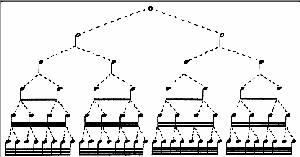
 ODAY I WOULD LIKE TO SHARE briefly about the final of three goals I have for my probationers during our first month of rehearsals, teaching rhythm.
ODAY I WOULD LIKE TO SHARE briefly about the final of three goals I have for my probationers during our first month of rehearsals, teaching rhythm.
It is easy to teach a child what a quarter note is and that it receives 1 beat, and even how to clap four quarter notes in a measure. The same generally goes for half notes and whole notes. However, I have found that the trouble with reading rhythms began when I asked probationers to clap any kind of syncopation. I tried teaching new students to read rhythms using the traditional counting of the beat method (1, 2, 3, 4), but students struggled with the concept that in music the beat began at 1, not zero, which meant that a note that received one-and-a-half beats ended on the “and” of two, instead of one. They also struggled to speak the beat while clapping rhythms that didn’t even fall on the beat (they wanted to clap on every beat as well as where the rhythm dictated).
Some time ago, I switched to teaching Kodaly based rhythm syllables, which worked well up to a point. This year, with the help of our new music teacher, we switched to Takadimi (click here for a clear and succinct guide to Takadimi), which has been working incredibly well. Takadimi allows the child to focus entirely on speaking the rhythm he is clapping, instead of doing two things at once (speaking the beat on top of clapping the rhythm). Later on, once children have achieved rhythmic fluency, it it much easier to teach them to speak the beat at the same time as clapping the rhythm. Kids love this, too!

